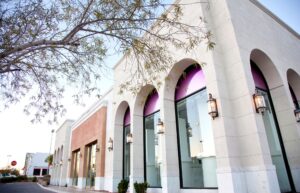
The Impact of Retail Architecture on Consumer Behavior
Consumers are influenced by a multitude of factors, some of which operate beneath their conscious awareness. Among these subtle influences, retail architectural design plays a significant role. While some architectural aspects are readily apparent, others operate on a subconscious level, shaping consumer behavior without shoppers even realizing it. In this article, we’ll delve into the key architectural factors that affect a profound influence on shoppers’ behavior.
-
Space Utilization:
Retail architecture wields its influence primarily through space utilization. The interior layout, determined by wall placement and space allocation, can create an environment that feels open and expansive or focused and directed. Luxury brands often favor open and spacious layouts, associating them with uniqueness and opulence.
-
Spatial Aesthetics:
Elements like skylights, high ceilings, and intricate details contribute to a sense of elegance and grandeur and the impact of retail architecture on consumer behavior by shifting the perception of the products within a space. This perception often translates into a willingness to pay more for products showcased in such environments, making them a preferred choice for luxury retailers. In contrast, boutiques and small cafes opt for cozy and intimate settings to encourage extended stays and increased purchases.

-
Architectural Symbolism:
Architectural designs in retail settings don’t need to convey explicit messages; instead, they should aim to associate innovative designs with specific locations or brands. Notable examples include Apple’s iconic glass cube stores and the Guggenheim Museum, both of which are landmarks renowned not only for their contents but also their architectural uniqueness.
-
The Flow of Movement:
The layout of a retail space significantly influences consumer behavior. Curvilinear and angled designs encourage leisurely exploration, prompting shoppers to meander through the area, discover more stores, and make unplanned purchases. Linear layouts, on the other hand, facilitate efficient navigation but do little to boost engagement or encourage visits to additional stores.
-
Multi-Sensory Architecture:
Beyond visual aesthetics, modern retail architecture deliberately engages multiple senses. Acoustic panels alter the sound environment, while textured surfaces and varied materials invite tactile exploration. Such sensory elements can also reinforce thematic concepts, as seen in stores focusing on natural products through the use of wood, stone, and natural materials.
-
Technology Integration:
Incorporating technology into retail spaces is a growing trend. Interactive displays, digital signage, and augmented reality experiences capture shoppers’ attention, enhance their mood, and divert their focus from spending concerns, ultimately leading to increased sales.
-
Comfort and Convenience:
Elements like seating areas, restrooms, and lighting significantly impact consumers’ overall experience. Retail spaces that prioritize comfort and convenience encourage shoppers to spend more time and money within them.

If you are in need of architectural designs for your retail space, we invite you to reach our team at Ted Trout Architects. Our expertise lies in creating exceptional architectural spaces with the goal of maximizing each sites potential and positively influence consumer behavior positively.

